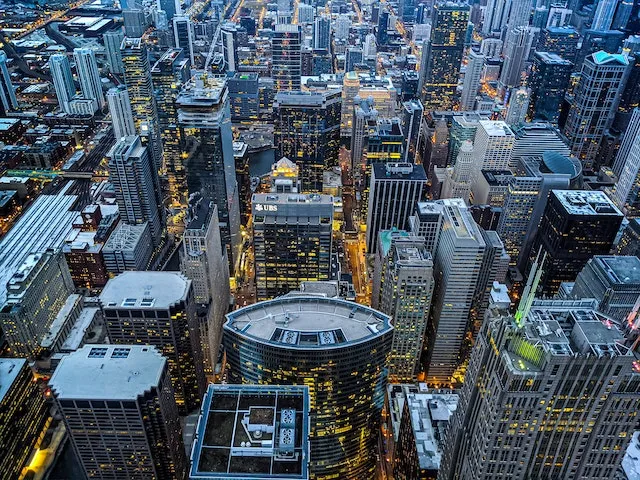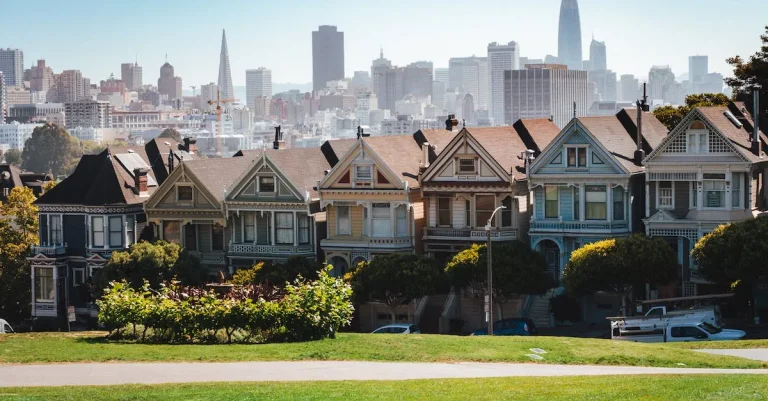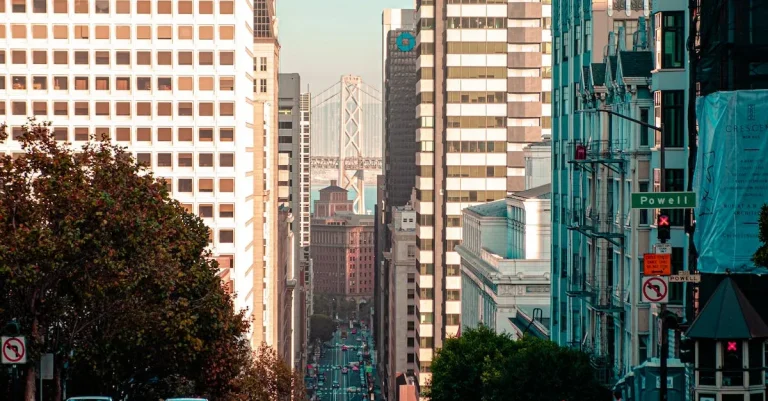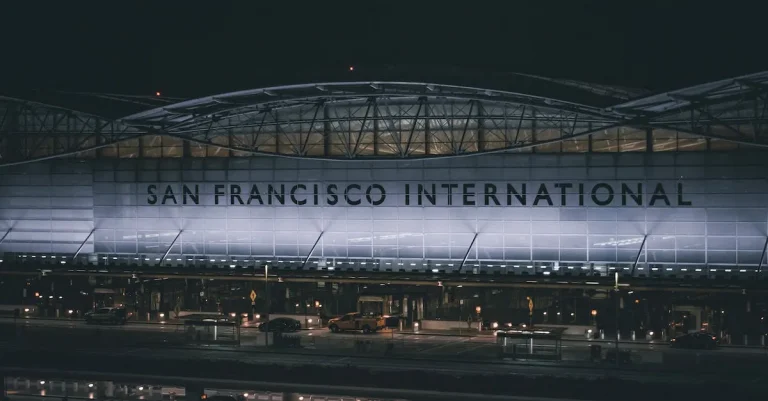Why Is Chicago Called The Second City?
Chicago is famously nicknamed “The Second City,” which may seem puzzling given Chicago’s size and status today as the third largest city in the United States. So how did the Windy City get this moniker that implies it is second-rate?
If you’re short on time, here’s a quick answer to your question: Chicago earned the nickname “Second City” in the late 1800s because it was rebuilt and became the second major city in population and importance after the Great Chicago Fire.
In this comprehensive look at Chicago’s history, we’ll examine the origins of Chicago’s ‘Second City’ nickname, its geographical significance, and the ways Chicago has embraced the motto even as it has exceeded second-tier status.
The Great Chicago Fire and Rebuilding
One of the key factors behind Chicago being called the “Second City” is the Great Chicago Fire of 1871. This devastating fire had a profound impact on the city, leading to its destruction and subsequent rebuilding.
Chicago Rose as Major City Before 1871 Fire
Prior to the Great Fire, Chicago had already established itself as a major city. It had experienced rapid growth, thanks to its strategic location on Lake Michigan and its thriving economy fueled by industries like meatpacking, manufacturing, and trade.
By the mid-19th century, Chicago had become a bustling metropolis, attracting immigrants and settlers from all over the world.
With its booming population and flourishing industries, Chicago was on its way to becoming one of the most influential cities in the United States. However, the devastating fire would test the resilience of its residents and redefine the city’s future.
Destroyed in the Great Fire
The Great Chicago Fire of 1871 started on October 8 and raged on for two days, engulfing large parts of the city. It is believed to have begun in a barn owned by Patrick and Catherine O’Leary, although the exact cause remains a subject of debate.
The fire rapidly spread due to strong winds and the city’s predominantly wooden structures, ultimately leaving around a third of Chicago in ruins.
The fire caused widespread devastation, claiming hundreds of lives and leaving thousands homeless. Many iconic buildings and landmarks were reduced to ashes, including the Chicago Water Tower and the city’s business district.
The destruction caused by the fire was a significant setback for the city, but it also presented an opportunity for rebirth.
Rebuilt Bigger and Stronger as ‘Second City’
Despite the immense challenges, Chicagoians were determined to rebuild their beloved city. The reconstruction efforts that followed the Great Fire were marked by innovation and resilience. Architects and engineers implemented new building techniques, such as the use of steel frames and fire-resistant materials, to ensure that Chicago would rise from the ashes stronger than ever before.
Chicago’s rebirth as a modern city was a testament to its indomitable spirit. The city’s population and economy rebounded rapidly, surpassing pre-fire levels within a few years. The rebuilt Chicago became known as the “Second City” because of its remarkable resurgence and its rise as a major cultural, economic, and political center in the United States.
Today, Chicago continues to be called the “Second City” not because it is second in importance, but as a nod to its ability to overcome adversity and reinvent itself. It remains a thriving metropolis, renowned for its iconic architecture, vibrant arts scene, and diverse cultural heritage.
Chicago’s journey from devastation to triumph serves as an inspiration to cities around the world.
Chicago’s Geographic Position to New York City
Chicago, often referred to as “The Second City,” earned this nickname due to a combination of factors, including its geographic position in relation to New York City. Let’s explore how Chicago’s location played a role in its label as the “Second City.”
New York City Was Largest U.S. City in Late 1800s
In the late 1800s, New York City was the largest city in the United States. Its rapid growth and economic dominance made it the center of attention and the primary destination for immigrants seeking new opportunities. However, Chicago was not far behind.
During this time, Chicago experienced significant growth and development, fueled by its strategic location as a transportation hub and its proximity to the Midwest’s vast resources. The city quickly became a major industrial and commercial center, attracting people from all over the country.
Chicago Dubbed ‘Second City’ Due to Being Second in Population
Chicago earned the moniker “Second City” because it was the second-largest city in the United States, trailing only behind New York City. The population of Chicago soared, reaching impressive numbers that solidified its position as a major urban center.
The term “Second City” also captures the competitive spirit and ambition that Chicago embodies. Despite being in the shadow of New York City, Chicago has consistently strived to cultivate its unique identity and make a name for itself on the global stage.
Transportation Hub Links Chicago to West
One of the key factors contributing to Chicago’s rise as a major city was its role as a transportation hub. Situated on the shores of Lake Michigan, Chicago became a vital connection point between the eastern and western parts of the United States.
The construction of the Illinois and Michigan Canal in the 1840s further solidified Chicago’s position as a transportation hub. This canal connected the Great Lakes to the Mississippi River, opening up trade routes and allowing goods to flow in and out of the city.
Additionally, the development of railroads, such as the transcontinental railroad, further enhanced Chicago’s status as a transportation hub. The city became a gateway to the West, facilitating the movement of people, goods, and ideas across the country.
Today, Chicago continues to thrive as a global metropolis, known not only for its bustling economy but also for its rich cultural heritage, iconic architecture, and vibrant arts scene. Its nickname as “The Second City” serves as a reminder of its resilience, determination, and unwavering spirit.
Ongoing References to Chicago as Second City
Second City Comedy Theater Embraced the Nickname
One of the main reasons why Chicago is called the “Second City” is due to the presence of the famous Second City Comedy Theater. Established in 1959, the theater has become renowned for its improvisational and sketch comedy performances.
The founders, Paul Sills and Bernie Sahlins, embraced the nickname as a way to showcase Chicago’s vibrant comedy scene. Second City has been a breeding ground for some of the most talented comedians in the industry, including Tina Fey, Stephen Colbert, and Bill Murray.
The theater’s success and influence have solidified Chicago’s reputation as a hub for comedy, thus cementing the city’s status as the “Second City.”
Used by Media and in Popular Culture
The nickname “Second City” has been widely used by the media and in popular culture to refer to Chicago. It has been mentioned in numerous books, movies, and songs, further perpetuating its association with the city.
For example, the famous Chicago-born journalist Mike Royko popularized the term in his columns, contributing to its widespread usage. Additionally, the hit musical and movie “Chicago” features the song “All That Jazz,” which includes the line “Give ’em the old razzle-dazzle, razzle-dazzle ’em.
Give ’em an act with lots of flash in it, and the reaction will be passionate.” This line, along with the overall portrayal of Chicago as a city of ambition and second chances, further emphasizes the “Second City” moniker.
Source of Civic Pride and Identity
Despite its humble origins, being referred to as the “Second City” has become a source of civic pride for Chicagoans. The nickname represents the city’s resilience, creativity, and ability to thrive despite not being the nation’s largest metropolis.
Chicagoans take pride in their city’s rich history, diverse culture, and contributions to various fields, such as architecture, sports, and the arts. The nickname has become a part of Chicago’s identity and is often used as a symbol of the city’s unique character and spirit.
Examining Chicago’s Ongoing Second City Status
Chicago, often referred to as “The Second City,” has long held a prominent position in the United States. Despite its nickname, Chicago is no longer second in population nationally. However, its history and significance continue to solidify its second city status in other ways.
No Longer Second in Population Nationally
While Chicago was once the second most populous city in the United States, it has since been surpassed by cities like Los Angeles and Houston. According to the latest census data, Chicago now ranks third in terms of population.
This shift can be attributed to various factors such as economic changes and shifts in migration patterns. Nonetheless, Chicago’s population remains sizable and diverse, contributing to its cultural richness and vibrant atmosphere.
Despite no longer holding the second position in population, Chicago still maintains its status as the largest city in the state of Illinois. In fact, when considering the Chicago metropolitan area, which includes surrounding suburbs and counties, its population surpasses that of any other city in the state.
This distinction reinforces Chicago’s position as the primary economic and cultural hub of the region.
Still Second in Illinois Behind Chicago Metro Area
When examining the state of Illinois as a whole, Chicago’s influence becomes even more apparent. While Chicago itself may no longer be second in population nationally, the Chicago metropolitan area continues to dominate the state.
The metro area encompasses numerous counties and cities, including the likes of Naperville and Aurora, which together contribute to Chicago’s overall prominence. This concentrated urban region serves as a magnet for businesses, tourists, and residents alike.
In terms of economic impact, Chicago holds a significant advantage over other cities in Illinois. It boasts a diverse range of industries, including finance, technology, manufacturing, and transportation.
The city’s skyline, anchored by iconic landmarks such as Willis Tower and Navy Pier, serves as a testament to its economic prowess and global significance.
International Prominence Despite Second City Moniker
Despite being called the “Second City,” Chicago has established itself as a global destination for commerce, culture, and tourism. Its influence extends far beyond its borders, attracting visitors from around the world.
The city’s renowned architecture, world-class museums, and vibrant music and theater scene contribute to its international prominence.
Chicago has also become a hub for major events and conferences, hosting international summits and trade shows. The city’s convention center, McCormick Place, is one of the largest in the world, further solidifying Chicago’s status as a global player.
Furthermore, Chicago’s diverse population and neighborhoods have garnered attention and recognition on a global scale. From the historic Bronzeville neighborhood to the trendy Wicker Park area, Chicago offers a rich tapestry of cultures and experiences.
This diversity is celebrated through various festivals and events, showcasing the city’s vibrant multiculturalism.
Conclusion
Though it may seem unfitting for the mighty economic and cultural center that Chicago has become, the ‘Second City’ nickname has stuck as an endearing part of the city’s identity. The origins in Chicago’s rise from the ashes after tragedy explain how it once was America’s second great city. While no longer second rate, the motto is a source of strength for residents and part of what gives Chicago its character today.








